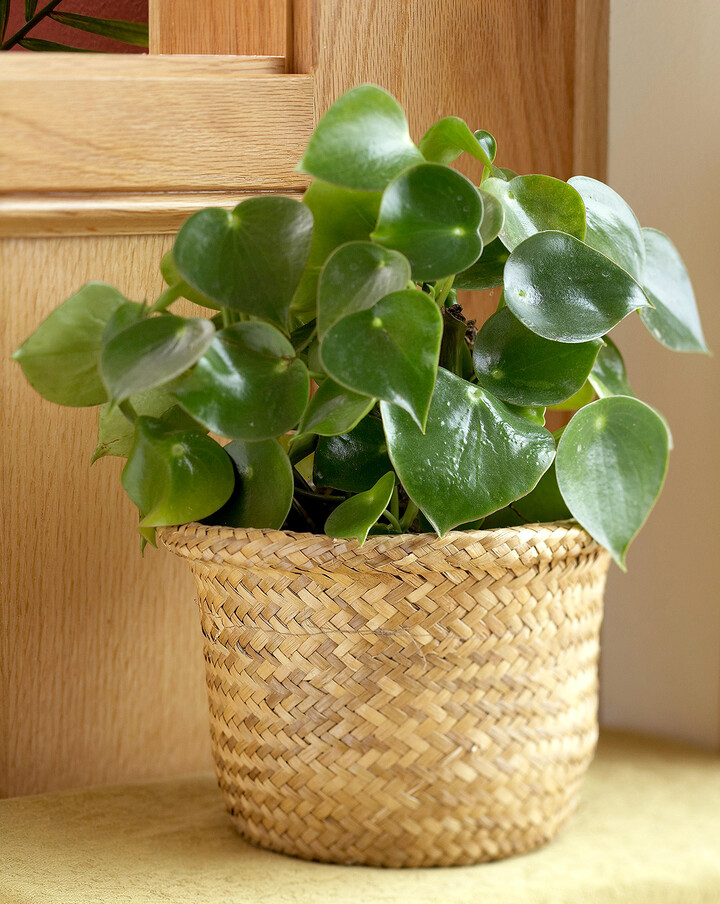Sometimes referred to as baby rubber plant, peperomia is a commonly grown, low-maintenance house plant. This interesting plant is native to many tropical climates, often found in cloud forests and rainforests growing as an epiphyte (on wood). The genus of peperomia includes over 1,000 species presently recorded. There is bound to be at least one that would grow well in your home.

GENUS NAME Peperomia | LIGHT Part Sun Shade Sun |
PLANT TYPE Houseplant | |
HEIGHT Under 6 inches 6 to 12 inches 1 to 3 feet | WIDTH 6 to 18 inches |
FLOWER COLOR Green | FOLIAGE COLOR Blue/Green |
PROBLEM SOLVERS Drought Tolerant | |
SPECIAL FEATURES Low Maintenance Good for Containers | |
PROPAGATION Division Leaf Cuttings Stem Cuttings | |
Colorful Combinations
Grown for their foliage, peperomias are quite varied in their appearance. In general, they feature thick, fleshy leaves that store water. These leaves come in a variety of shapes and sizes, with some species having leaves smaller than a dime and others as large as a baseball. The leaves of peperomia are often a deep emerald green, but many species feature intricate markings and patterns in silver. Ripple peperomias, one of the more popular species, have puckered and ruffled foliage. There are plenty of variegated varieties to choose from as well, with creams and whites making an appearance in their leaves. And while they are unique, the flowers of peperomias are far from showy. In a home setting, blooming can be a rare occurrence. The blooms are long, narrow stalks often in a green or brown color that don't resemble flowers. More often than not, people choose to pinch these blooms off as they take away from the overall appeal of the plant.
Peperomia Care Must-Knows
Peperomias are one of the easiest houseplants to grow in your home. Hailing from areas like tropical cloud forests, where humidity is generally over 90%, peperomias prefer areas with 40 to 50% humidity, such as terrariums. Likewise, it is easy to grow peperomia in your bathroom because of the high humidity levels. However, most peperomias perform almost as well in less-moist areas of your house. Because these plants are used to growing on rotting trees and other wood, they are also accustomed to fairly dry and erratic growing conditions. This is why many peperomias are succulent in nature.
When growing peperomias in containers, make sure to plant them in well-drained soils. A quick way to kill peperomias is with too much water or too heavy of soil. They also have very few roots, so peperomias generally do best when grown in small containers. They are also fine being pot-bound, and caution should be taken when re-potting. Be sure to not put them in too large of a pot, or you'll risk potential for rotting.
Peperomias tolerate a wide variety of light conditions. In general, keep peperomias out of direct light; remember, most of these species are from beneath forest canopies. Some of the larger-, thicker-leaf varieties can tolerate quite a bit of sun, and they will quickly lean toward a light source; so be sure to rotate your plants on a regular basis. Many of the smaller-leaf varieties will grow wonderfully in low light. Peperomias will tolerate trimming, so feel free to cut them back if your plants become leggy. Those extra pieces that you remove can be propagated to create more plants. Remove the lower leaves from a stem, keeping one or two mature leaves at the top and at least one node on the stem to stick in the soil. You can then stick these cuttings directly in moist potting mix, and they will root in a few weeks. Many of the stemless types, like the ripple peperomias, can also be started by leaf cuttings similar to an African violet.